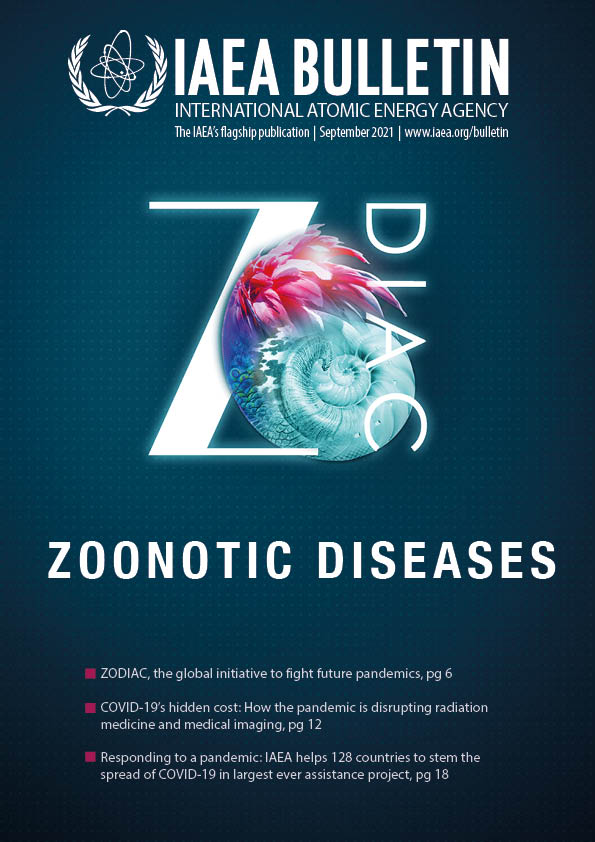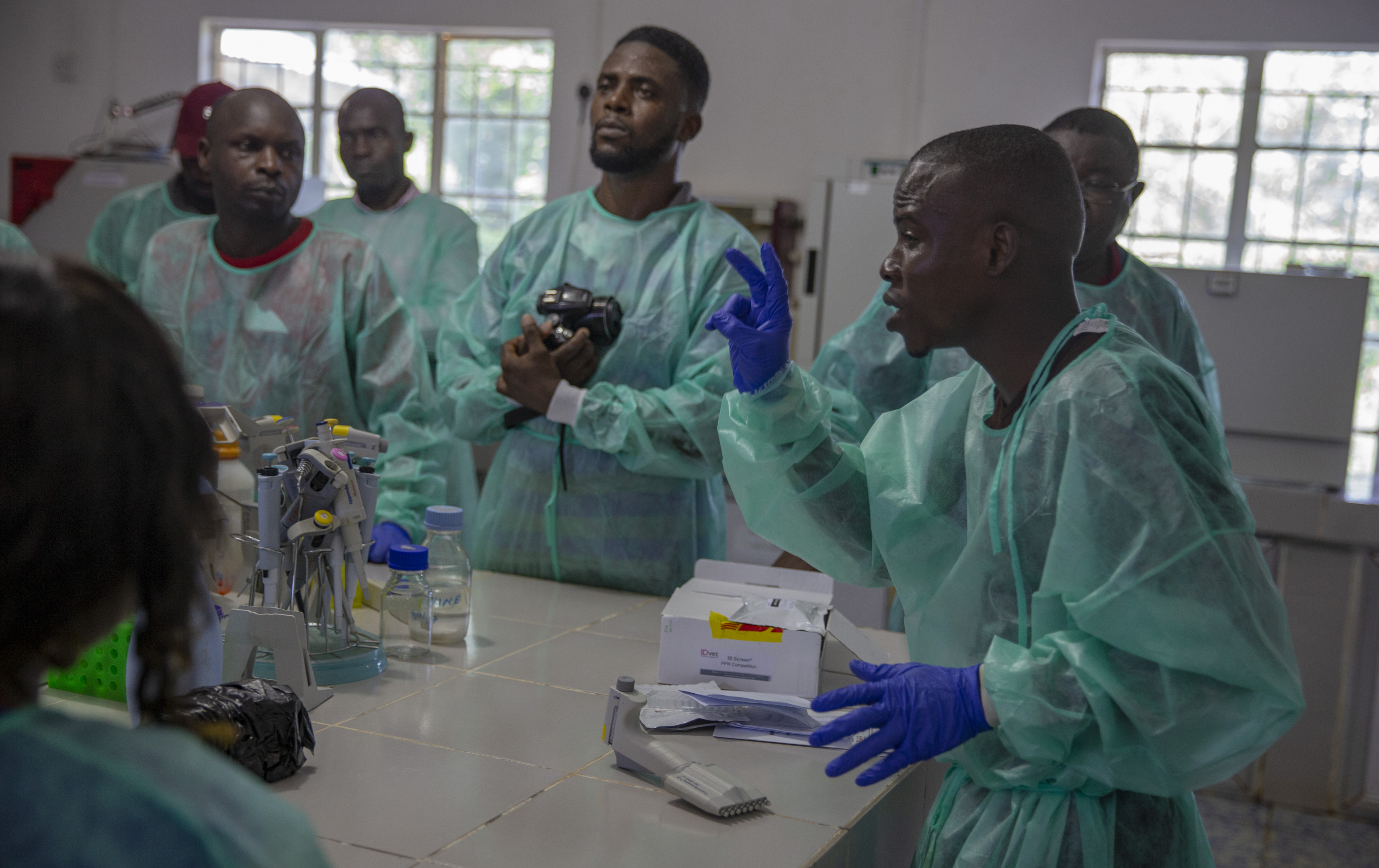In 2005, following a spate of African swine fever outbreaks in the Democratic Republic of the Congo, Gerrit Viljoen, working for the Food and Agriculture Organization of the United Nations (FAO) and the IAEA, visited a piggery outside Kinshasa. Viljoen was there to train local scientists in disease sampling techniques and prepare them for potential outbreaks. What he witnessed still preys on his mind.
Over a dramatic three days, the highly contagious swine pathogen causing the disease swept through the farm, killing all of its 5000 pigs. As tragic as that outbreak and the devastation it wrought on livelihoods were, African swine fever fortunately stops at pigs and does not infect people. But that’s not true for all animal diseases. Many of today’s most contagious and deadly infectious diseases — seven out of every ten — originate from animals. We call them zoonotic diseases or zoonoses.
By providing training, equipment, chemical reagents and technical expertise, the IAEA, in partnership with the FAO, has contributed to bringing some of the world’s most dangerous and damaging diseases, including COVID-19, under control. The IAEA’s response to the ongoing pandemic is the latest in a string of efforts to combat zoonoses, including Zika, severe acute respiratory syndrome (SARS), Middle East respiratory syndrome (MERS), Rift Valley fever, avian influenza, brucellosis and Ebola.

